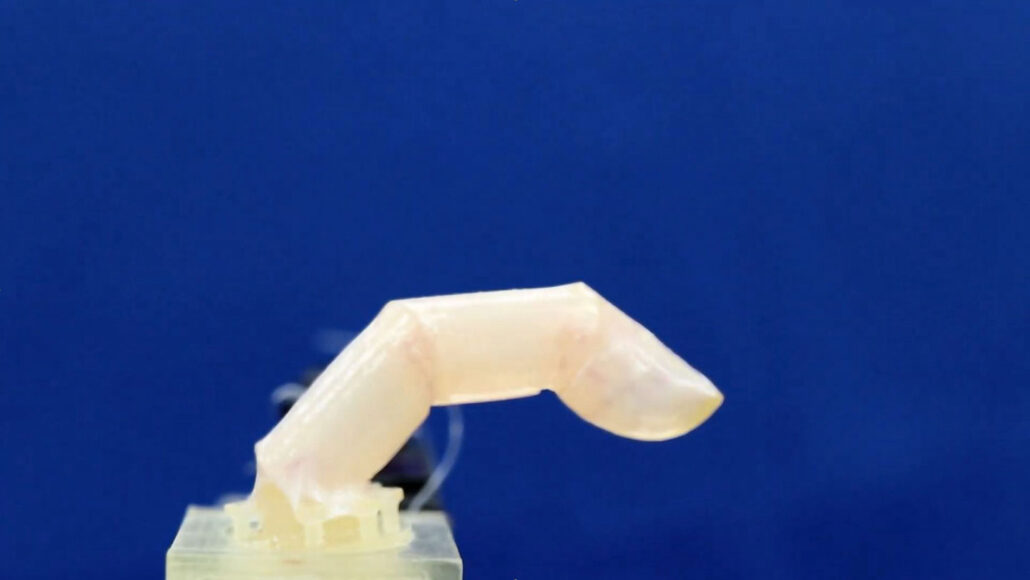This robotic finger is covered in living human skin
Robots wearing real skin could blend in better with humans, scientists suspect

Living human skin grown around a robotic finger can bend with the finger (shown) and even heal itself when cut.
Shoji Takeuchi
Robots that blend in with real people may be one step closer to reality.
A team of researchers has grown living human skin around a robotic finger. The goal is to someday build cyborgs that appear truly human. Those robots could have more seamless interactions with people, the researchers say. That might prove useful in medical-care and service industries. But whether machines disguised as people would be more likable — or just plain creepy — is probably a matter of opinion.
Biohybrid engineer Shoji Takeuchi led the research. He and his colleagues at the University of Tokyo in Japan shared their new development June 9 in Matter.
Covering a robotic finger in living skin took a few steps. First, the researchers covered the finger in a blend of collagen and fibroblasts. Collagen is a protein found in human tissue. Fibroblasts are cells found in human skin. The mix of collagen and fibroblasts settled into a base layer of skin around the finger. That layer is called the dermis.
The team then poured a liquid onto the finger. This liquid contained human cells known as keratinocytes (Kair-ah-TIN-oh-sites). Those cells formed an outer layer of skin, or epidermis. After two weeks, the skin covering the robotic finger was a few millimeters (0.1 inch) thick. That’s about as thick as real human skin.
This lab-made skin was strong and stretchy. It didn’t break when the robot finger bent. It also could heal itself. The team tested this by making a small cut on the robotic finger. Then, they covered the wound with a collagen bandage. Fibroblast cells on the finger merged the bandage with the rest of the skin within a week.
“This is very interesting work and an important step forward in the field,” says Ritu Raman. She’s an engineer at the Massachusetts Institute of Technology in Cambridge. She was not involved in the research. But she, too, builds machines with living parts.
“Biological materials are appealing because they can … sense and adapt to their environments,” Raman says. In the future, she’d like to see living robot skin embedded with nerve cells to help robots sense their surroundings.
But a cyborg couldn’t wear the current lab-grown skin out and about just yet. The robot finger spent most of its time soaking in a soup of nutrients that cells need to survive. So, a robot wearing this skin would have to bathe often in a nutrient broth. Or it would need some other complex skin care routine.







